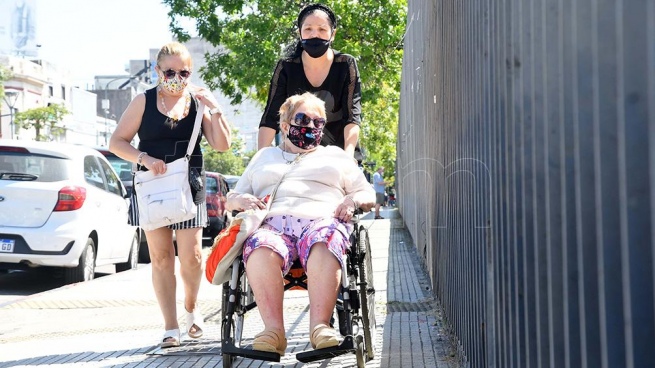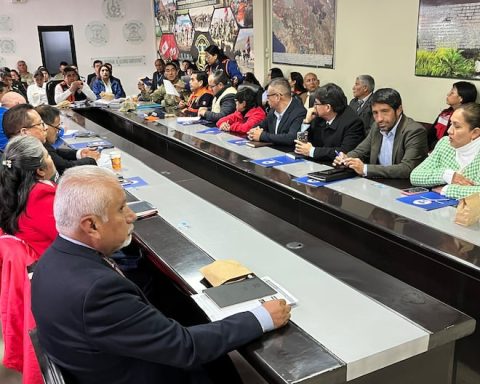Financial vulnerability increases in Argentina in households where there are women heads of household who are in charge of caring for other people, and the main destination of debts is linked to the responsibility for those same cares, according to a study carried out by the Economic Commission for Latin America (ECLAC)
The study shows that 35% of households in general they have one high vulnerability to indebtednessa percentage that grows 40% in the homes of informal workers.
49% of the 10,000 households surveyed destines more than half of your income just to pay off debtswhich is divided into 25% who say they allocate half, 11% who allocate all their income and 18% who maintain that the income is not enough to pay the debts.
“Debt breeds more debt,” one of the report’s authors argued, Ariel Wilkis, in the presentation of the work he carried out together with the economist Lucía Tumini.
According to the report, 49 out of 100 respondents indicated that they took on debt to pay for food and health32 to pay off loans, 31 to settle loans in stores and 29 to pay off credit cards.
The report also inquired about in what the households that took debts fell behindand the item with the highest number of positive responses was services and taxes (46%) and telephony (40%) followed by help from family and friends (36%) and credit card with 27%.
Tumini pointed out that without placing value on responsibilities, “financial vulnerability does not distinguish between male and female heads of household, but by incorporating this factor, it is shown that care is feminized and that aggravates financial vulnerability”.
“Households headed by women, with a demand for care and low income are the ones with the highest level of financial vulnerability. It is the intersection between care, gender and income that deepens financial vulnerability,” the report concludes.

Add that “Households with a female head and demand for care have requested more credits, have a higher level of delay in the payment of all debts”, among which are “the payment of overdue debts and care expenses (food, health, education, housing, connectivity)”.
The expert pointed out that “there are very different needs of a young child, adolescent or person with a disability“, so the work differentiated these three cases.
He pointed out that in households with people who require permanent care (elderly adults or those with disabilities) “the proportion of households that can outsource it is very low, that is, that have relatives or friends who can collaborate in the care, and even less is the proportion of households that can resort to paid outsourcing.”
“The households with the most financial vulnerability are those of people with disabilities, that are feminized (caring is done by women),” Tumini said.
He added that in homes with “children, there is more presence of a family network capable of providing care. These homes depend less on outsourcing,” he added.
He also marked as relevant that when asking about the main obstacles in the organization of care, “the low-income households headed by women present a greater perception of obstacles and first of all indicate that they do not have a family network”.
In general, all households agree that “the money is not enough to manage care, and the difficulties with employment, although it is homogeneous, are the female-headed households with low incomes that raise the lack of licenses in jobs or what cannot coordinate care responsibilities with work”indicated
“Regardless of whether or not they have care responsibilities, financial vulnerability is not expressed in terms of headships,” Tumini pointed out, to underline that “We go from 25% of households with financial vulnerability to 35% when we look at care homes.
“When we look at female-headed households with care responsibility, more than 55% are in a situation of high financial vulnerability,” he emphasized.
In this group of households “There are situations in which the main destination of credits is to pay for food”; added.
For his part, Wilkis highlighted the “intimate relationship between financial vulnerability and responsibility for care.”
“The study adds the debt gap to the agenda of economic inequalities based on gender”, said the expert.
In this sense, he assured that “by presenting the survey we show the destination and origin of care debts, which express double inequality”, and stressed that “women’s debts affect their lives; economically, in health, etc”:
In the seminar “Indebtedness, gender and care”, with @aliciabarcena We present data on how care is organized and what its impact is on the indebtedness of women and LGBTI+, to advance policies that reverse inequalities together with @ONU_en and @cepal_onu. pic.twitter.com/jAXBmxfNyF
— Eli Gomez Alcorta (@EliGAlcorta) March 28, 2022
The presentation of the work was carried out at the Indebtedness, Gender and Care Seminar held in Buenos Aires, with the participation of the Executive Secretary of ECLAC, Alicia Bárcena, and the Minister of Women, Gender and Diversity of Argentina, Elizabeth Gomez Alcorta.
This seminar was the last public act of Bárcena after 14 years at the head of ECLAC.

















